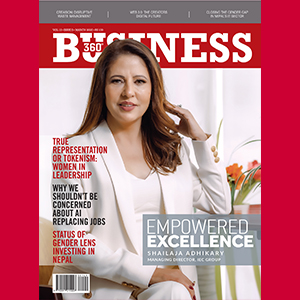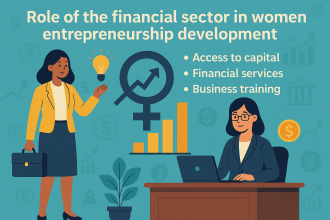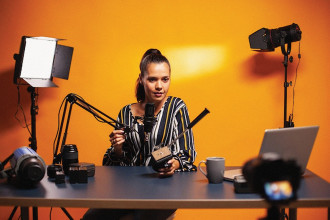
Content creation is one of those jobs that lets Nepali talent vibe in Nepal and earn in dollars. In addition to garnishing their personal income by earning in dollars rather than rupees, creators aid retailers and brands in sales and marketing, the government through awareness campaigns and promotion of tourism, and entertain the wider audiences. The ability to create personalised content based on market demand grants these individuals the title of influencers.
Creativity channeled into content creation for multiple digital platforms is akin to fulfilling the demands of a full-time job. YouTuber Marques Brownlee of MKBHD calls it the Octopus. In the beginning, the digital creator is a full-time writer, cinematographer, actor and manager, then when brands come calling to capitulate on their success, the creator needs to be a full-time editor, accountant, public relations officer and brand strategist. Logic dictates chopping off all eight of the Octopus’s arms, keeping one or two for the creator and handing over the rest to a team to accelerate the performance and scale operations. Financing the team is done through the revenue generated by activity on digital platforms.
Creators deal in engagement and viewer retention and viewership over time generates revenue and brand recognition for the creator. However, visibility and possibility for brand collaboration is dictated by the internet gatekeepers’ fickle guidelines. For example, in 2022 Instagram’s maximum payout for views and engagements on their short-term videos was $35,000 but Instagram increased the threshold from 58 million views to 359 million for maximum payout. Various possibilities available to creators worldwide are blocked in Nepal creating a barrier for earning through existing platforms.
Today the virtual world is transitioning to Web 3.0 which represents the next evolution of the internet aiming for a decentralized and user centric web experience built on technologies like blockchain and AI. Blockchain technology is poised to dismantle the old order’s control through reclamation of ownership of data. Platforms like Steemit, Verasity and Audius, built on blockchain ledgers, offer creators unprecedented ownership of their content and data. Every post, video and song is immutably recorded. Transcribing data to the blockchain yields a token of ownership. Based on the success of the platform, adoption and retail investment – ownership of tokens aids growth potential for creators creating personalised and niche content catering to the audience’s demands. This is a stark contrast to Web 2.0, where content can be de-platformed or demonetised at the whim of corporate algorithms.
TruthSocial and BlueSky are two platforms experience mass adoption and empowering creators. These platforms, operating on a network of interconnected servers, allow users to interact seamlessly across different platforms, bypassing the restrictive policies of centralised operators. This ‘Fediverse’ model opens up new revenue streams through infrastructure investment, advertising and direct fan support. Imagine a world where creators receive a significantly larger share of fan subscriptions, bypassing the hefty cuts taken by platforms like Twitch. While challenges remain in establishing new platforms and attracting users, the potential for long-term financial gains through early adoption is undeniable. Because no platform is immune to the looming threat of redundancy.
Anupama Sangraula, a financial literacy expert, advocate and content creator, said, “When TikTok got banned, it really made me think, what if other platforms that you rely on just disappear?” The sheer number of views and comments accumulated by a creator through their hard work and patience would disappear in a matter of hours alongside the platform. Proof of ownership through a token and the perennial nature of blockchain negates that.
A digital token represents a unit of value issued on a blockchain. They represent ownership of an asset, access to a service, or participation in a platform. Tokens are proof that the content creators own their content and grant voting rights during shift in policy. For example, token holders may vote for increased moderation in streaming platforms hosted on the blockchain, and some creators may add moderation duties to their roster, paid at an hourly rate by the platform through reducing the creator’s total earnings.
Why should a new creator in Nepal choose to upload to a decentralised social media platform? Nepal Food, an Instagram channel with over 400,000 followers belongs to Siddhartha Ghimire. He says, “Monetisation is a big challenge, especially for new creators. In the food blogging space, sharing recipes and cooking tips consistently helps attract loyal followers. Decentralised platforms like Steemit and Audius allows us creators to take control of our content and earnings. This is exciting because it gives food bloggers the chance to benefit more from our hard work. Ultimately, it is about sharing my love for food while ensuring the work is rewarded and sustainable.”
Ghimire adds, “Many creators are unaware of the benefits of decentralised platforms. It is crucial to stay informed and explore these new options. As food bloggers, we need to be open to new ways of sharing our culinary adventures and connecting with our audience.”
To maximise revenue in the future, the creator, like Ghimire, must first claim ownership over the labour poured into creating content. Once the content is handed over to the platform, the creator must remain the owner of the content they have put out. Sangroula adds, “I have been making finance and legal content for a while now, mostly using regular platforms. Web 3.0 is still new to me, but the idea of actually owning my content and not being dependent on one platform sounds really great. I am curious to learn more and let us see where it can take me." Web3 facilitates this.
However, uploading to the blockchain may realise its worth in the future, but today it is insufficient to pay the creator’s operational costs. The usage of federated decentralised social media networks pales in comparison to established central social media networks; subscriptions on other platforms remain far more lucrative. Yet, over time the accumulation of tokens, of loyal subscribers, of engagement from the curious discovering their niche, and the market’s valuation of tokens can enrich the financial situation of amateur and established creators.
Web 3.0 is still new to me, but the idea of actually owning my content and not being dependent on one platform sounds really great. I am curious to learn more and let us see where it can take me.
Moreover, recycling content across both centralised and decentralised platforms allows creators to maximise their reach and revenue streams. While data ownership may seem abstract, the increasing volatility of centralised platform policies underscores the importance of diversifying revenue sources.
Yet, over 70% of creators remain unaware of the opportunities Web 3.0 presents. Burgeoning visual storyteller, photographer and the face of aayushofficial, Aayush Shrestha says, “I didn’t know what Web 2.0 and Web 3.0 are before. It felt like it was out of my league, but now I know.” This knowledge gap highlights the need for education and awareness. Though maturity of Web 3.0 is in the distant future, early adoption is crucial for both creators and platforms, fostering a symbiotic relationship where both parties benefit from mutual growth.
As creators, companies and innovators grow through Web 3.0, it is apt to remember the words of MKBHD’s Marques Brownlee. The Octopus’ hold ensnares. The creator, at their core, is doing what they love. In addition to the wealth they accumulate from doing what they love, they must also retain – at its core – the pleasures of daily activities that they enjoy shared to an audience that connects with them. Growth and expansion are inevitable. To finance it is a necessity best facilitated by maximising the utility of platforms available to them.






